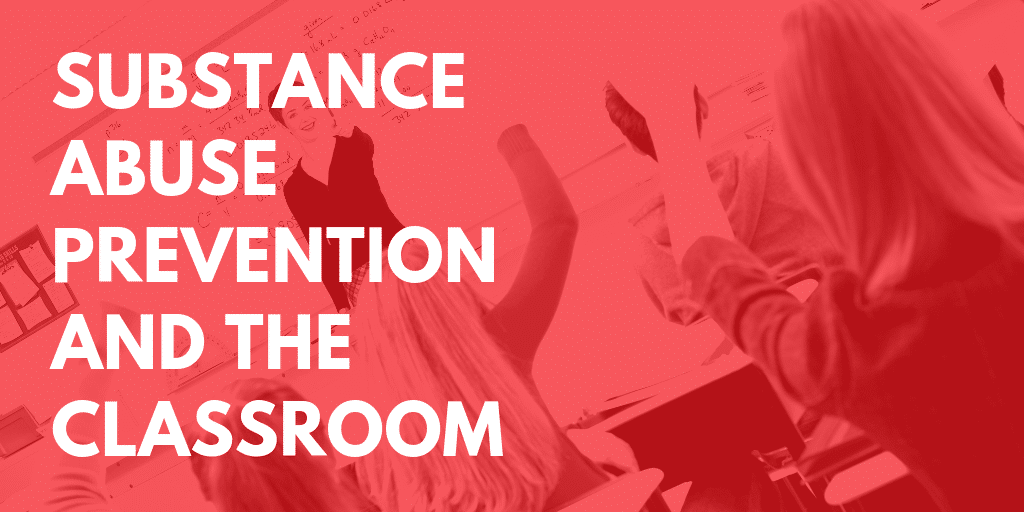
Did you know? 90% of addictions start in the teen years.1 Youth substance use and abuse is an important issue, and adults have the power to be positive forces for prevention in their lives.
What are the facts?
Alcohol is the most commonly used and abused drug among youth in the United States.2 The 2021 Youth Risk Behavior Survey found that among high school students, Approximately one third of students (29%) reported current use of alcohol or marijuana or prescription opioid misuse; among those reporting current substance use, approximately 34% used two or more substances.3 In addition, over 2.5 million middle and high school students use e-cigarettes with nearly half (46%) of high schoolers who vape doing so near daily.4
How is youth substance abuse related to school?
- School is the primary social setting for youth and the place where they spend most of their time during the day. Many youth want to feel liked and included in a group, which can sometimes make them susceptible to peer pressure.5
- Risk of drug use increases during times of transition, such as advancing through school and facing new social, family and academic situations.6
- Youth often have misperceptions of social norms around partying, underage drinking and drug use, which drives their behavior to be more like their peers. Conversations among students at school often fuel these misperceptions.
The parts of the brain that control judgment and decision-making are not fully developed until around age 25, which means teens’ ability to accurately assess the risks of drug use is limited, and they are more vulnerable to peer pressure. Because the brain is still developing, using drugs at this age has more potential to disrupt brain function in areas critical to memory, learning, judgment and behavior.7 If this happens, academic performance can be directly negatively impacted.
Why prevention?
Prevention efforts can boost protective factors and reduce risk factors for youth drug use. Having consistent, ongoing conversations at school with youth about alcohol, tobacco and other drugs, in combination with those conversations happening at home, is a very powerful prevention tool. When students are informed of the risks and consequences of substance use, know that adults in their lives disapprove and understand that MOST teens are not doing it, they are less likely to experiment. Beyond that, when basic alcohol and drug prevention skill-building are incorporated into everyday teaching, students can learn to make good decisions, solve problems, become more assertive and learn refusal skills, be more self-aware and build positive relationships.8
What can teachers, coaches and school officials do?
Several resources exist to help incorporate substance abuse prevention into the school day. Below are a few of our favorites:
- Teachers: Classroom Resources on Drug Effects – NIDA for Teens
- Teachers: Partners in the fight against underage drinking – Ask, Listen, Learn
- Heads Up: Real News About Drugs and Your Body – For Teachers – NIDA and Scholastic
- Materials for School – SAMHSA
- Virtual Field Trips – Operation Prevention
- Activities for Educators – Red Ribbon Campaign
The Georgia Department of Education also has an extensive list of resources for educators.
Educators can play a critical role in youth substance abuse prevention efforts. Incorporating prevention into the school day can decrease substance use among teens, encouraging improved academic performance and success with future goals beyond.
Sources:
- https://drugfree.org/article/risk-factors-why-teens-use
- https://www.cdc.gov/alcohol/fact-sheets/underage-drinking.htm
- https://www.cdc.gov/healthyyouth/data/yrbs/index.htm
- https://truthinitiative.org/our-top-issues/vaping-issue
- https://www.samhsa.gov/school-campus-health
- https://www.drugabuse.gov/publications/drugs-brains-behavior-science-addiction/preventing-drug-misuse-addiction-best-strategy
- https://guideinc.org/prevention/public-awareness-campaigns/save-brains
- https://blog.ed.gov/2019/01/how-to-identify-and-support-students-suffering-from-substance-abuse
